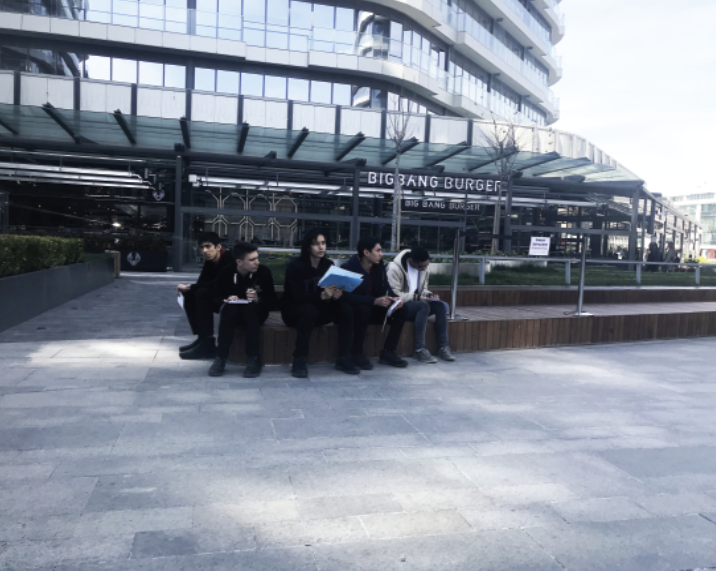THE SOUND OF THE PLACE
YERİN SESİ (appl. in 2019)
Main Goal
The Timbre of the Place engages youth in an understanding and design of space by using multiple senses and orchestrates their musical interpretation. This makes participants active observants of their physical environment and performers of their sensorial assessment. In this process, participants become a part of a series of creative work ranging from music composition to drawing.
Motivation
Urban open spaces allow users to gain limited spatial experience due to single-type and consumption-oriented design limitations that these spaces offer. This focuses users to experience what is accentuated in space and this, in hence, prevents the perceptibility of other spatial features, and the actualization of diverse individual and collective experiences that those features may foster. This, in turn, may stimulate repetitive behavior putting users in a limited state of action while even sometimes activating only individuals' learned habits and mental plans beyond the entire sensorial experience of space. Space becomes instrumental rather than a milieux to be fully lived.
However, urban open spaces represent very special places of cities that contribute to the development of people both individually and collectively in social, cultural and cognitive matters. For urban open spaces to be considered as part of daily life, both people's sensorial experiences and spatial responsiveness to such experiences are needed. Thereby, user and place exchange can translate itself into collective experiences which, eventually, may interact with users at the individual level and continue by constructing a cyclic process of experiences.
Our observations show that an experience of a place is similar to an experience while listening to a piece of music. While the experience in space requires mainly the use of the visual sense, a music experience is done mainly with the use of the auditory sense. We assert that these two experiences can be synchronized so that they contribute to enrich spatial experience as well as musical. Furthermore, what is learned from those experiences can be used as a design input in the production of urban open spaces.
Innovation
The program is planned in a way that is guided by school teachers specialized in design and music. Youth who receive additional training in these fields can qualitatively contribute further to the outcomes of the process but this is not a must. Collaboration with local universities is also welcome.
The process design of the program includes five phases:
(i) choosing two urban open spaces with respect to their differing technical, contextual and emotional character; (ii) observing the selected places through individual sensorial experiences; (iii) searching for shared meaning in individual sensorial observations through dialogue; (iv) formulating the musical characters of two selected places [e.g., tonality, tempo, measure, nuance, key range, rhythm]; (v) composing one piece of music representing the shared musicality of each selected place and performing them on stage; (vi) designing the imagined urban open space and presenting it in a visually creative way.
Collective Learning
-
to activate diverse senses in experiencing the place and the music piece,
-
to establish a communicative bond between the place and the music,
-
to become co-designers of creative processes in space design and music composition,
-
to develop skills for generating SharEmotion and UniMind,
-
to catalyze collective connectedness in creative processes.
Teachers
Music and design teachers at schools. Collaboration with instructors at a local university from planning and/or architecture fields can enrich the process.
Participants
Youth from 15 to 18 years old. The program can also be adopted to involve children from 11 to 14 years old.








